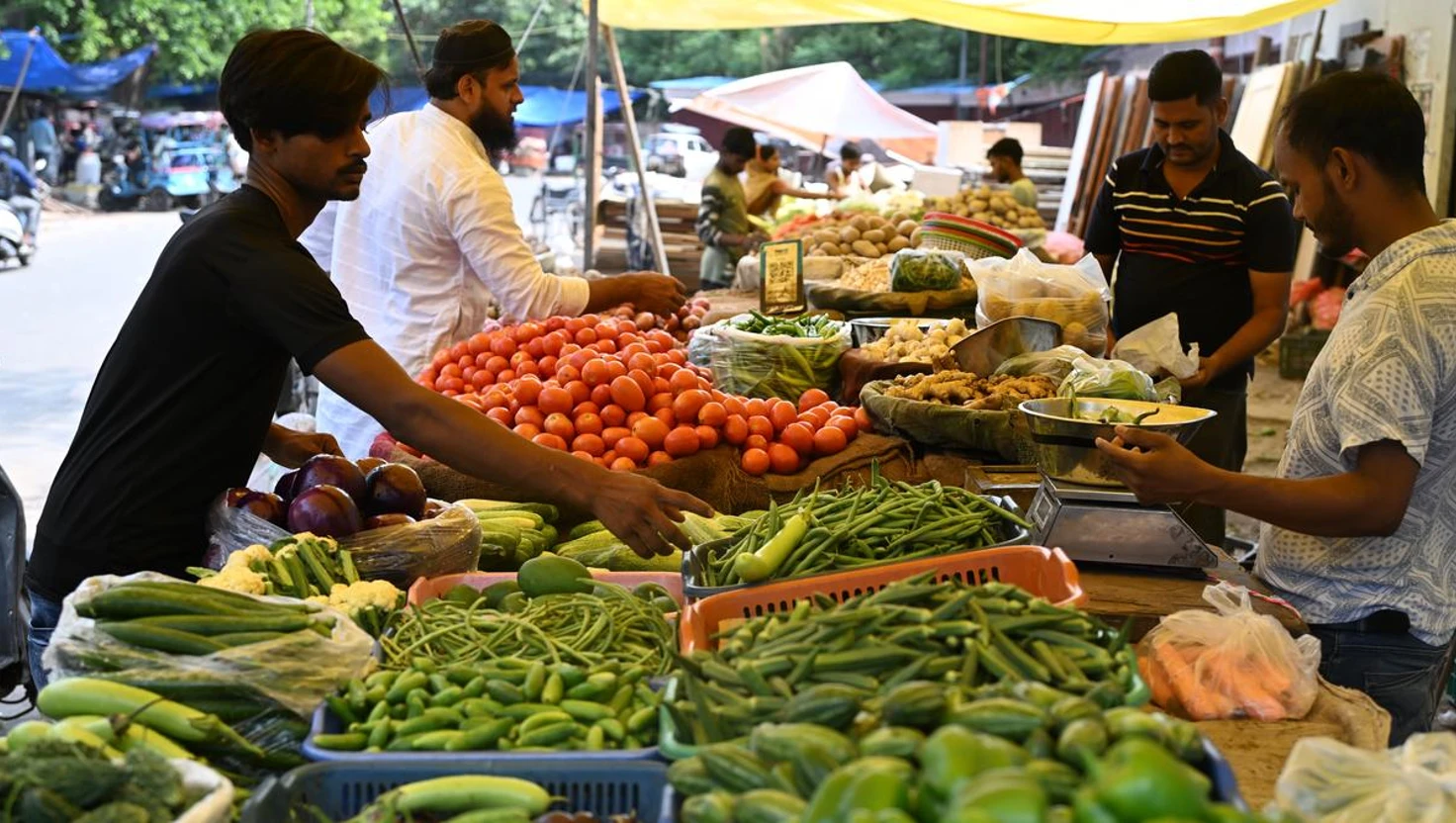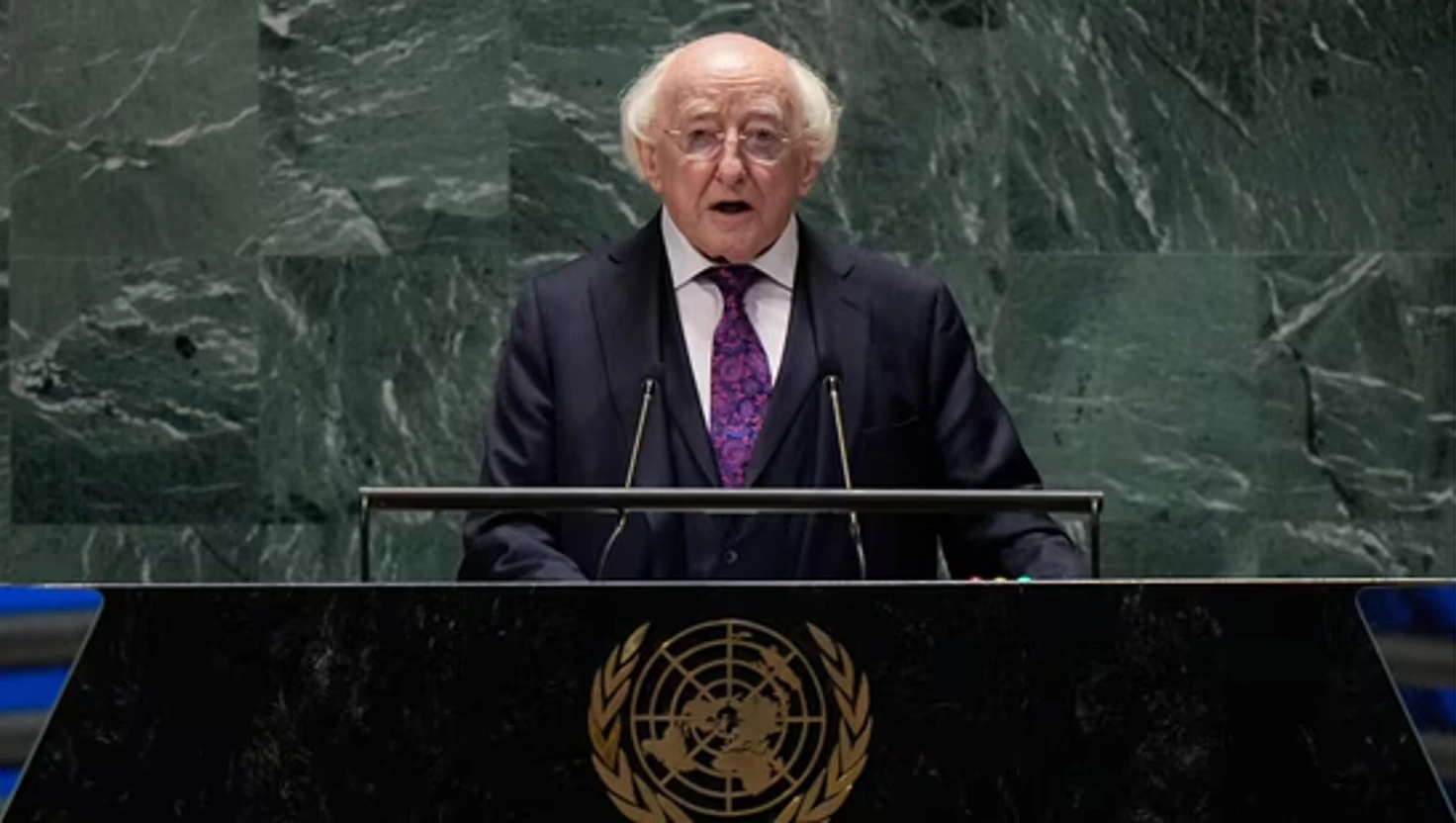India's Retail Inflation Hits Eight-Year Low at 1.55% in July

India's Retail Inflation Hits Eight-Year Low at 1.55% in July
India's retail inflation fell to 1.55% in July 2025, the lowest since 2017, primarily due to lower food prices, impacting farmers.
India's retail inflation rate for July 2025 has decreased to 1.55%, marking the lowest level recorded since June 2017. This significant drop was primarily driven by declining prices of food items, particularly vegetables and pulses. The figure not only falls below the Reserve Bank of India's (RBI) tolerance range of 2% to 6% but also is lower than analysts' expectations of 1.76%.
Inflation Trends
The Consumer Price Index (CPI), released by the Ministry of Statistics and Programme Implementation, indicates that this drop forms part of a broader trend where inflation has been decreasing for nine consecutive months. The annual inflation rate for food and beverages was reported at -0.8% in July, contrasting sharply with 5.1% recorded in July 2024.
According to Rajani Sinha, Chief Economist at CareEdge Ratings, the main contributors to the downturn in food prices were vegetables and pulses, which experienced contractions of 21% and 14% respectively. Sinha noted, "In the food basket, there was deflation in key items such as vegetables, pulses, spices, and meat." This decline is attributed to a combination of factors, including a high base from previous years and favourable weather conditions supporting agricultural output.
Implications for Farmers
While consumers may benefit from lower prices, such trends pose challenges for some farmers, as noted in a report by Citibank's chief India economist, Samiran Chakraborty. He indicated that declining food prices could negatively affect farmers’ incomes, especially as production costs continue to increase.
Chakraborty remarked that the pressure on farmers stems from a situation where food prices are declining while operational costs are rising. This concern underscores the potential for shifts in rural consumption patterns, as reflected in Citibank's rural consumption index.
Central Bank Response
The RBI has recently updated its inflation forecasts, reducing them for the current financial year from 3.7% to 3.1%. The central bank maintained its key interest rates during this period, suggesting a cautiously optimistic outlook for economic growth. Nevertheless, some economists suggest that continued low inflation might prompt further rate cuts. Sujan Hajra, chief economist at Anand Rathi Group in Mumbai, expressed that the low inflation rates and potential impacts from U.S. tariffs could create room for additional monetary policy adjustments.
Global Factors
The economic outlook for India could be affected by recent trade developments. U.S. tariffs on Indian goods, imposed by President Donald Trump, could be a contributing factor to economic uncertainty. Economists have estimated that up to 55% of India's merchandise exports to the United States will be subject to these tariffs, which may shave 30 to 40 basis points off India’s GDP growth.
Despite these pressures, analysts believe that favourable agricultural conditions and improved agricultural productivity may mitigate some of the adverse effects caused by global trade dynamics.
Future Outlook
Looking ahead, many analysts expect that food inflation will remain manageable, supported by strong agricultural activity and adequate reservoir levels, which should contribute positively to the overall economic climate. Core inflation, which excludes the more volatile categories of food and fuel, eased slightly to around 4.1% in July, indicating a generally stable demand environment. This update signals that, while challenges remain, particularly for specific sectors within agriculture, overall inflationary pressures appear contained, setting the stage for cautious optimism in the months ahead.
Inflation Trends
The Consumer Price Index (CPI), released by the Ministry of Statistics and Programme Implementation, indicates that this drop forms part of a broader trend where inflation has been decreasing for nine consecutive months. The annual inflation rate for food and beverages was reported at -0.8% in July, contrasting sharply with 5.1% recorded in July 2024.
According to Rajani Sinha, Chief Economist at CareEdge Ratings, the main contributors to the downturn in food prices were vegetables and pulses, which experienced contractions of 21% and 14% respectively. Sinha noted, "In the food basket, there was deflation in key items such as vegetables, pulses, spices, and meat." This decline is attributed to a combination of factors, including a high base from previous years and favourable weather conditions supporting agricultural output.
Implications for Farmers
While consumers may benefit from lower prices, such trends pose challenges for some farmers, as noted in a report by Citibank's chief India economist, Samiran Chakraborty. He indicated that declining food prices could negatively affect farmers’ incomes, especially as production costs continue to increase.
Chakraborty remarked that the pressure on farmers stems from a situation where food prices are declining while operational costs are rising. This concern underscores the potential for shifts in rural consumption patterns, as reflected in Citibank's rural consumption index.
Central Bank Response
The RBI has recently updated its inflation forecasts, reducing them for the current financial year from 3.7% to 3.1%. The central bank maintained its key interest rates during this period, suggesting a cautiously optimistic outlook for economic growth. Nevertheless, some economists suggest that continued low inflation might prompt further rate cuts. Sujan Hajra, chief economist at Anand Rathi Group in Mumbai, expressed that the low inflation rates and potential impacts from U.S. tariffs could create room for additional monetary policy adjustments.
Global Factors
The economic outlook for India could be affected by recent trade developments. U.S. tariffs on Indian goods, imposed by President Donald Trump, could be a contributing factor to economic uncertainty. Economists have estimated that up to 55% of India's merchandise exports to the United States will be subject to these tariffs, which may shave 30 to 40 basis points off India’s GDP growth.
Despite these pressures, analysts believe that favourable agricultural conditions and improved agricultural productivity may mitigate some of the adverse effects caused by global trade dynamics.
Future Outlook
Looking ahead, many analysts expect that food inflation will remain manageable, supported by strong agricultural activity and adequate reservoir levels, which should contribute positively to the overall economic climate. Core inflation, which excludes the more volatile categories of food and fuel, eased slightly to around 4.1% in July, indicating a generally stable demand environment. This update signals that, while challenges remain, particularly for specific sectors within agriculture, overall inflationary pressures appear contained, setting the stage for cautious optimism in the months ahead.

Ireland President ‘unequivocally’ condemns attacks on Indian community
Irish President Michael D. Higgins condemns recent violent attacks on the Indian community, emphasising their contributions to Irish society.
| 2025-08-13

Jr NTR Warns Disruptive Fan at War 2 Event in Hyderabad
Actor Jr NTR paused his speech at the War 2 pre-release event to warn a disruptive fan, as excitement builds for his Bollywood debut with Hrithik Roshan.
| 2025-08-12

JSW Cement IPO Oversubscribed Nearly Eight Times on Final Day
JSW Cement’s ₹3,600 crore IPO closes with 7.77 times subscription, strong QIB demand, and listing set for 14 August on BSE and NSE.
| 2025-08-12

Microsoft Launches Copilot 3D to Turn Photos into 3D Models
Microsoft’s Copilot 3D uses AI to convert 2D images into downloadable 3D models, making game, animation, and printing projects more accessible.
| 2025-08-12

'Not an era of war': India backs US-Russia meet on Ukraine
India welcomes planned US-Russia summit in Alaska aimed at ending Ukraine war, as President Trump warns of more sanctions and raises tariffs.
| 2025-08-10




